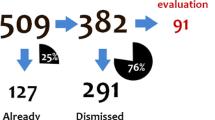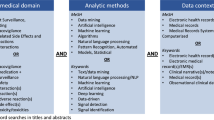Summary
Adverse drug effects are manifold and heterogenous. Many situations may hamper the signalling (i.e. the detection of early warning signs) of adverse effects and new signals often differ from previous experiences.
Signals have qualitative and quantitative aspects. Different categories of adverse effects need different methods for detection. Current pharmacovigilance is predominantly based on spontaneous reporting and is mainly helpful in detecting type B effects (those effects that are often allergic or idiosyncratic reactions, characteristically occurring in only a minority of patients and usually unrelated to dosage and that are serious, unexpected and unpredictable) and unusual type A effects (those effects that are related to the pharmacological effects of the drug and are dosage-related). Examples of other sources of signals are prescription event monitoring, large automated data resources on morbidity and drug use (including record linkage), case-control surveillance and follow-up studies. Type C effects (those effects related to an increased frequency of ‘spontaneous’ disease) are difficult to study, however, and continue to pose a pharmacoepidemiological challenge.
Seven basic considerations can be identified that determine the evidence contained in a signal: quantitative strength of the association, consistency of the data, exposure response relationship, biological plausibility, experimental findings, possible analogies and the nature and quality of the data. A proposal is made for a standard signal management procedure at pharmacovigilance centres, including the following steps: signal delineation, literature search, preliminary inventory of data, collection of additional information, consultation with the World Health Organization Centre for International Drug Monitoring and the relevant drug companies, aggregated data assessment and a report in writing. A better understanding of the conditions and mechanisms involved in the detection of adverse drug effects may further improve strategies for pharmacovigilance.
Similar content being viewed by others
References
Inman WHW, editor. Monitoring for drug safety. 2nd ed. Lancaster: MTP Press, 1986
Strom BL, editor. Pharmacoepidemiology. 2nd ed. Chichester: John Wiley, 1994
Irey N. Tissue reactions to drugs. Am J Pathol 1976; 82: 617–47
Evans SA. Causation and disease: the Henle-Koch postulates revisited. Yale J Biol Med 1976; 49: 175–95
Inman B. 30 years in postmarketing surveillance: a personal perspective. Pharmacoepidemiol Drug Saf 1993; 2: 239–58
Inman WHW. Postmarketing surveillance of adverse drug reactions in general practice. BMJ 1981; 282: 1131–2
Jick H. The discovery of drug-induced illness. N Engl J Med 1977; 296: 481–5
Davies DM, editor. Textbook of adverse drug reactions. 4th ed. Oxford: Oxford University Press, 1991
Edwards R, Lindquist M, Wiholm BE, et al. Quality criteria for early signals of possible adverse drug reactions. Lancet 1990; 336: 156–8
Coulter DM, Edwards IR, McQueen EG. New Zealand. In: Inman WHW, editor. Monitoring for drug safety. 2nd ed. Lancaster: MTP Press, 1986: 119–33
Dunne JF. The World Health Organization. In: Inman WHW, editor. Monitoring for drug safety. 2nd ed. Lancaster: MTP Press, 1986: 165–72
Wiholm BE, Olsson S, Moore N, et al. Spontaneous reporting systems outside the United States. In: Strom BL, editor. Pharmacoepidemiology. 2nd ed. Chichester: John Wiley, 1994
Li D, Lindquist M, Edwards IR. Evaluation of early signals of drug-induced Stevens-Johnson syndrome in the WHO ADR database. Pharmacoepidemiol Drug Saf 1992; 1: 11–8
Mann RD. Drug safety alerts: a review of ‘Current Problem’. Pharmacoepidemiol Drug Saf 1992; 1: 269–79
Meyboom RHB, Gribnau FWJ, Hekster YA, et al. Characteristics of topics in pharmacovigilance in the Netherlands. Clin Drug Invest 1996; 4: 207–19
Finney D. Statistical logic in the monitoring of reactions to therapeutic drugs. In: Inman WHW, editor. Monitoring for drug safety. 2nd ed. Lancaster: MTP Press, 1986: 423–42
Gross TP. The analysis of postmarketing drug surveillance data at the U.S. Food and Drug Administration. In: Strom BL, Velo G, editors. Drug epidemiology and post-marketing surveillance. New York: Plenum Press, 1992: 1–7
Kramer MS. Clinical epidemiology and biostatistics. Berlin: Springer-Verlag, 1988
Charlton BG. Attribution of causation in epidemiology: chain or mozaic? J Clin Epidemiol 1996; 49: 105–7
Meyboom RHB, Egberts ACG, Hekster YA, et al. The role of causality assessment in pharmacovigilance. Drug Saf. In press
Bradford Hill A. The environment and disease: association or causation? Proc R Soc Med 1965; 85: 295–300
Venning GR. Identification of adverse reactions to new drugs. III: Alerting processes and early warning systems. BMJ 1983; 286: 458–60
Author information
Authors and Affiliations
Additional information
An erratum to this article is available at http://dx.doi.org/10.1007/BF03257469.
Rights and permissions
About this article
Cite this article
Meyboom, R.H.B., Egberts, A.C.G., Edwards, I.R. et al. Principles of Signal Detection in Pharmacovigilance. Drug-Safety 16, 355–365 (1997). https://doi.org/10.2165/00002018-199716060-00002
Published:
Issue Date:
DOI: https://doi.org/10.2165/00002018-199716060-00002




